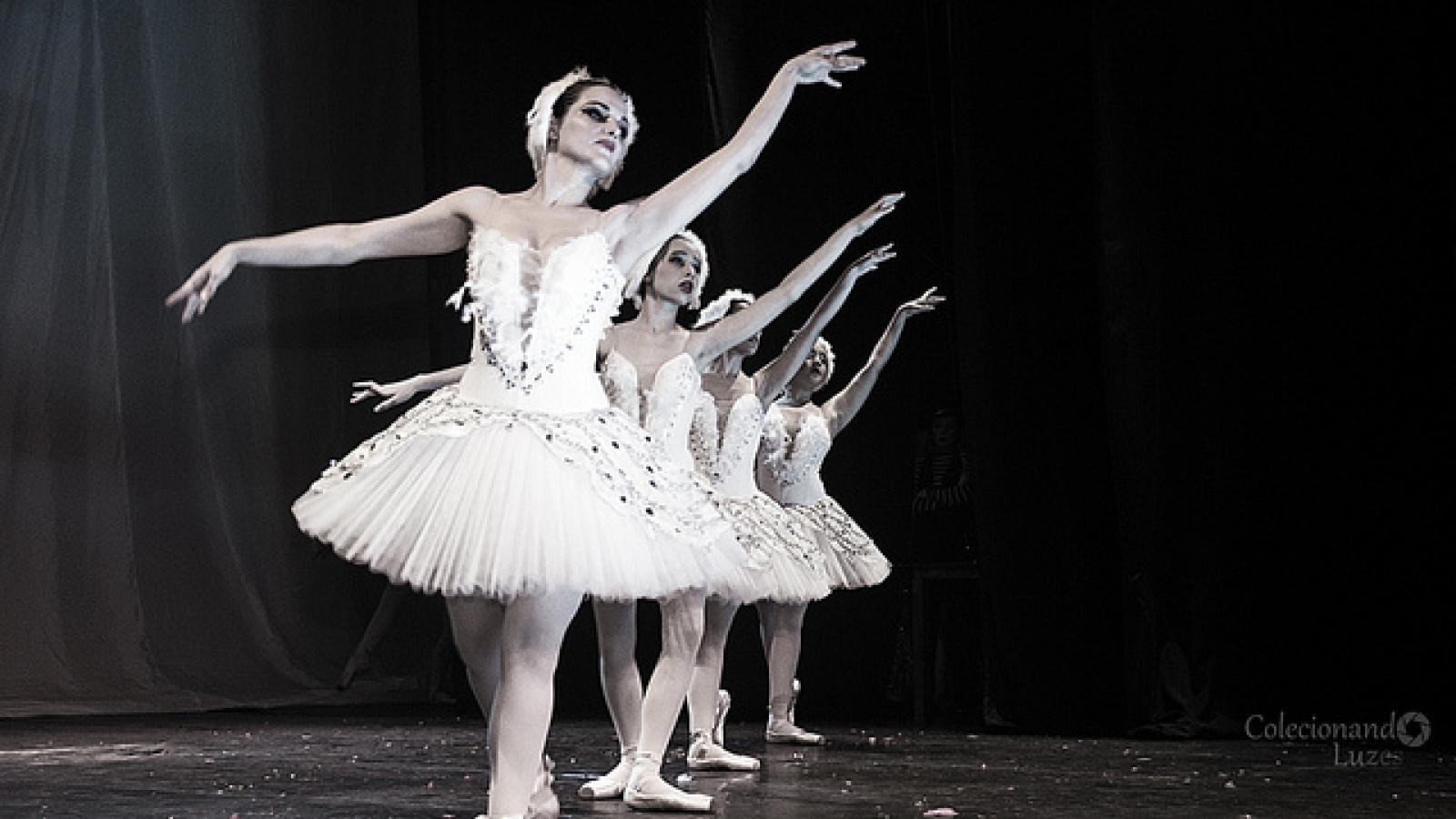Taking Note: The Worth of Nonprofit Performing Arts & Museums

Tener duende, to have a certain magic
Last month, the U.S. Bureau of Economic Analysis, in partnership with the NEA's Office of Research & Analysis (ORA), released the 2014 Arts and Cultural Production Satellite Account (ACPSA). Top-line statistics from the account include the share of U.S. GDP contributed by arts and cultural production (4.3 percent in 2012), the large number of workers employed in that production (4.7 million), and the growing trade surplus generated by the arts ($25 billion in that same year).
These headlines, however, do not speak to a key characteristic of the arts and cultural economy—its remarkable diversity. Armed with a guiding definition of arts and cultural commodities (products "intended chiefly as a function of creative or aesthetic engagement or to facilitate access to that engagement"), the BEA and the NEA's ORA set out to comprehensively measure the arts and cultural economy.
In doing so, the ACPSA unearthed a large variety of sectors producing arts and culture. These industries include, for example, the construction of new cultural structures; manufactured goods such as jewelry, stained glass, and architectural woodwork; and retail sales at art galleries, music stores, and florist shops.
In addition to featuring a range of industries, the arts and cultural economy is also characterized by both for-profit and nonprofit enterprises. Largely (though not exclusively) commercial arts industries such as broadcasting and motion pictures contribute great money value to the U.S. economy. In 2012, for instance, broadcasting added $121 billion from arts and cultural production; motion picture industries added nearly $96 billion.
At the same time, the contributions of the nonprofit arts and cultural sector are clearly not negligible. Excluding government as an industry (which accounts for $96.1 billion of value added to the U.S. economy), the most vivid example is performing arts and museums. Combining data from the ACPSA and the U.S. Census Bureau's Economic Census (which reports revenue by tax status for selected industries with significant shares of both taxable and tax-exempt income) reveals that nonprofit performing arts companies accounted for 40 percent ($6.5 billion) of the value added by all performing arts companies in 2012.
Similarly, we estimate that nonprofit museums contributed $4.7 billion in arts and cultural value added in 2012.
 Because the nonprofit performing arts and museums generate less monetary value than commercial arts industries, they may appear secondary within the ACPSA. But that conclusion is false.
Although smaller than, say, broadcasting or motion picture industries, tax-exempt performing arts companies and museums, it should be emphasized, contribute billions to the U.S. economy; combined, they employ more than 100,000 workers.
However, there are more meaningful reasons for the prominent role played by nonprofit performing arts companies and museums. To begin with, the dance companies, theaters, and orchestras composing the nonprofit performing arts, along with museums, are emblematic of arts and culture—they are what people often think of as "the arts."
Additionally, performing arts companies and museums are at the forefront of the NEA's grants to organizations. In 2012, the NEA awarded 790 grants (roughly 40 percent of all NEA grants to organizations, excluding state and regional partnership grants) totaling nearly $22 million to organizations identifying with dance, music, theater, opera, and museums.
And then there are the limitations of GDP. If I were stranded on a desert island and could have access to only one impersonal statistic, it would be GDP—it is a vital measure of economic activity. Even so, GDP cannot account for the inarguably large intrinsic value linked to the nonprofit performing arts and museums. The ACPSA, for example, cannot capture the profound meaning or emotion people experience from performances such as Swan Lake or "Rhapsody in Blue," or from an exhibit of Ansel Adams photographs.
Moreover, comparing the monetary values of commercial arts industries with those of nonprofit arts organizations can suggest a division between the two that may not always be clearly drawn. Consider, for example, industrial design, a largely commercial ACPSA industry. The first American chief of design for BMW, Christopher Bangle, was educated at the Art Center College of Design, a nonprofit organization, and, incidentally, an NEA grantee.
Bill Ivey, who was the NEA's seventh chairman, has written extensively about the relationship between the for-profit and nonprofit arts. (For one key example, see "Bridging the For-Profit and Not-for-Profit Arts," Journal of Arts Management, Law and Society, Summer 1999, Volume 29, Issues 2.) Prior to serving as NEA chairman, Ivey directed the nonprofit Country Music Foundation (also a recent and past NEA grantee), which, he notes, "possessed particularly strong ties to the entertainment community in Nashville." This statement refers, of course, to Nashville's primacy in commercial sound recording.
In her 2006 seminal report, Crossover: How Artists Build Careers across Commercial, Nonprofit, and Community Work, labor economist Ann Markusen and her colleagues studied artists working in the greater San Francisco and Los Angeles areas. She found that the artists studied moved among commercial and nonprofit sectors fluidly and often sequentially.
In all, the design of a comprehensive satellite account on arts and cultural production necessarily includes not only diverse industries, but also for-profit and nonprofit enterprises. These two sectors should be viewed not as autonomous, but symbiotic.
Performing arts companies and museums, among the most visible nonprofit arts industries, tend to generate less monetary value than largely commercial industries such as broadcasting and motion pictures. Nonetheless, they contribute billions to the U.S. economy and employ more than 100,000 workers.
And, though not unique to nonprofit performing arts companies and museums, these organizations generate large intrinsic value, or, put another way, they have tener duende, a certain magic.
Because the nonprofit performing arts and museums generate less monetary value than commercial arts industries, they may appear secondary within the ACPSA. But that conclusion is false.
Although smaller than, say, broadcasting or motion picture industries, tax-exempt performing arts companies and museums, it should be emphasized, contribute billions to the U.S. economy; combined, they employ more than 100,000 workers.
However, there are more meaningful reasons for the prominent role played by nonprofit performing arts companies and museums. To begin with, the dance companies, theaters, and orchestras composing the nonprofit performing arts, along with museums, are emblematic of arts and culture—they are what people often think of as "the arts."
Additionally, performing arts companies and museums are at the forefront of the NEA's grants to organizations. In 2012, the NEA awarded 790 grants (roughly 40 percent of all NEA grants to organizations, excluding state and regional partnership grants) totaling nearly $22 million to organizations identifying with dance, music, theater, opera, and museums.
And then there are the limitations of GDP. If I were stranded on a desert island and could have access to only one impersonal statistic, it would be GDP—it is a vital measure of economic activity. Even so, GDP cannot account for the inarguably large intrinsic value linked to the nonprofit performing arts and museums. The ACPSA, for example, cannot capture the profound meaning or emotion people experience from performances such as Swan Lake or "Rhapsody in Blue," or from an exhibit of Ansel Adams photographs.
Moreover, comparing the monetary values of commercial arts industries with those of nonprofit arts organizations can suggest a division between the two that may not always be clearly drawn. Consider, for example, industrial design, a largely commercial ACPSA industry. The first American chief of design for BMW, Christopher Bangle, was educated at the Art Center College of Design, a nonprofit organization, and, incidentally, an NEA grantee.
Bill Ivey, who was the NEA's seventh chairman, has written extensively about the relationship between the for-profit and nonprofit arts. (For one key example, see "Bridging the For-Profit and Not-for-Profit Arts," Journal of Arts Management, Law and Society, Summer 1999, Volume 29, Issues 2.) Prior to serving as NEA chairman, Ivey directed the nonprofit Country Music Foundation (also a recent and past NEA grantee), which, he notes, "possessed particularly strong ties to the entertainment community in Nashville." This statement refers, of course, to Nashville's primacy in commercial sound recording.
In her 2006 seminal report, Crossover: How Artists Build Careers across Commercial, Nonprofit, and Community Work, labor economist Ann Markusen and her colleagues studied artists working in the greater San Francisco and Los Angeles areas. She found that the artists studied moved among commercial and nonprofit sectors fluidly and often sequentially.
In all, the design of a comprehensive satellite account on arts and cultural production necessarily includes not only diverse industries, but also for-profit and nonprofit enterprises. These two sectors should be viewed not as autonomous, but symbiotic.
Performing arts companies and museums, among the most visible nonprofit arts industries, tend to generate less monetary value than largely commercial industries such as broadcasting and motion pictures. Nonetheless, they contribute billions to the U.S. economy and employ more than 100,000 workers.
And, though not unique to nonprofit performing arts companies and museums, these organizations generate large intrinsic value, or, put another way, they have tener duende, a certain magic.
 Because the nonprofit performing arts and museums generate less monetary value than commercial arts industries, they may appear secondary within the ACPSA. But that conclusion is false.
Although smaller than, say, broadcasting or motion picture industries, tax-exempt performing arts companies and museums, it should be emphasized, contribute billions to the U.S. economy; combined, they employ more than 100,000 workers.
However, there are more meaningful reasons for the prominent role played by nonprofit performing arts companies and museums. To begin with, the dance companies, theaters, and orchestras composing the nonprofit performing arts, along with museums, are emblematic of arts and culture—they are what people often think of as "the arts."
Additionally, performing arts companies and museums are at the forefront of the NEA's grants to organizations. In 2012, the NEA awarded 790 grants (roughly 40 percent of all NEA grants to organizations, excluding state and regional partnership grants) totaling nearly $22 million to organizations identifying with dance, music, theater, opera, and museums.
And then there are the limitations of GDP. If I were stranded on a desert island and could have access to only one impersonal statistic, it would be GDP—it is a vital measure of economic activity. Even so, GDP cannot account for the inarguably large intrinsic value linked to the nonprofit performing arts and museums. The ACPSA, for example, cannot capture the profound meaning or emotion people experience from performances such as Swan Lake or "Rhapsody in Blue," or from an exhibit of Ansel Adams photographs.
Moreover, comparing the monetary values of commercial arts industries with those of nonprofit arts organizations can suggest a division between the two that may not always be clearly drawn. Consider, for example, industrial design, a largely commercial ACPSA industry. The first American chief of design for BMW, Christopher Bangle, was educated at the Art Center College of Design, a nonprofit organization, and, incidentally, an NEA grantee.
Bill Ivey, who was the NEA's seventh chairman, has written extensively about the relationship between the for-profit and nonprofit arts. (For one key example, see "Bridging the For-Profit and Not-for-Profit Arts," Journal of Arts Management, Law and Society, Summer 1999, Volume 29, Issues 2.) Prior to serving as NEA chairman, Ivey directed the nonprofit Country Music Foundation (also a recent and past NEA grantee), which, he notes, "possessed particularly strong ties to the entertainment community in Nashville." This statement refers, of course, to Nashville's primacy in commercial sound recording.
In her 2006 seminal report, Crossover: How Artists Build Careers across Commercial, Nonprofit, and Community Work, labor economist Ann Markusen and her colleagues studied artists working in the greater San Francisco and Los Angeles areas. She found that the artists studied moved among commercial and nonprofit sectors fluidly and often sequentially.
In all, the design of a comprehensive satellite account on arts and cultural production necessarily includes not only diverse industries, but also for-profit and nonprofit enterprises. These two sectors should be viewed not as autonomous, but symbiotic.
Performing arts companies and museums, among the most visible nonprofit arts industries, tend to generate less monetary value than largely commercial industries such as broadcasting and motion pictures. Nonetheless, they contribute billions to the U.S. economy and employ more than 100,000 workers.
And, though not unique to nonprofit performing arts companies and museums, these organizations generate large intrinsic value, or, put another way, they have tener duende, a certain magic.
Because the nonprofit performing arts and museums generate less monetary value than commercial arts industries, they may appear secondary within the ACPSA. But that conclusion is false.
Although smaller than, say, broadcasting or motion picture industries, tax-exempt performing arts companies and museums, it should be emphasized, contribute billions to the U.S. economy; combined, they employ more than 100,000 workers.
However, there are more meaningful reasons for the prominent role played by nonprofit performing arts companies and museums. To begin with, the dance companies, theaters, and orchestras composing the nonprofit performing arts, along with museums, are emblematic of arts and culture—they are what people often think of as "the arts."
Additionally, performing arts companies and museums are at the forefront of the NEA's grants to organizations. In 2012, the NEA awarded 790 grants (roughly 40 percent of all NEA grants to organizations, excluding state and regional partnership grants) totaling nearly $22 million to organizations identifying with dance, music, theater, opera, and museums.
And then there are the limitations of GDP. If I were stranded on a desert island and could have access to only one impersonal statistic, it would be GDP—it is a vital measure of economic activity. Even so, GDP cannot account for the inarguably large intrinsic value linked to the nonprofit performing arts and museums. The ACPSA, for example, cannot capture the profound meaning or emotion people experience from performances such as Swan Lake or "Rhapsody in Blue," or from an exhibit of Ansel Adams photographs.
Moreover, comparing the monetary values of commercial arts industries with those of nonprofit arts organizations can suggest a division between the two that may not always be clearly drawn. Consider, for example, industrial design, a largely commercial ACPSA industry. The first American chief of design for BMW, Christopher Bangle, was educated at the Art Center College of Design, a nonprofit organization, and, incidentally, an NEA grantee.
Bill Ivey, who was the NEA's seventh chairman, has written extensively about the relationship between the for-profit and nonprofit arts. (For one key example, see "Bridging the For-Profit and Not-for-Profit Arts," Journal of Arts Management, Law and Society, Summer 1999, Volume 29, Issues 2.) Prior to serving as NEA chairman, Ivey directed the nonprofit Country Music Foundation (also a recent and past NEA grantee), which, he notes, "possessed particularly strong ties to the entertainment community in Nashville." This statement refers, of course, to Nashville's primacy in commercial sound recording.
In her 2006 seminal report, Crossover: How Artists Build Careers across Commercial, Nonprofit, and Community Work, labor economist Ann Markusen and her colleagues studied artists working in the greater San Francisco and Los Angeles areas. She found that the artists studied moved among commercial and nonprofit sectors fluidly and often sequentially.
In all, the design of a comprehensive satellite account on arts and cultural production necessarily includes not only diverse industries, but also for-profit and nonprofit enterprises. These two sectors should be viewed not as autonomous, but symbiotic.
Performing arts companies and museums, among the most visible nonprofit arts industries, tend to generate less monetary value than largely commercial industries such as broadcasting and motion pictures. Nonetheless, they contribute billions to the U.S. economy and employ more than 100,000 workers.
And, though not unique to nonprofit performing arts companies and museums, these organizations generate large intrinsic value, or, put another way, they have tener duende, a certain magic.




